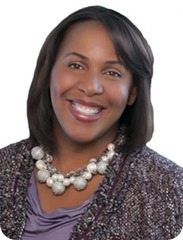Sponsored Content by SanofiAug 19 2015
Please can you outline the “jack of all trades” communications model and why you think it is outdated?
Communications professionals often are expected to be experts in all facets of the vast spectrum of communications, from brand, corporate, crisis and digital communications to corporate reputation and channel strategy and everything in between.
That’s an outdated communications model that ignores the individual strengths of team members and it can result in inconsistent and ineffective communications. We produce mediocre, not excellent, work when we are expected to be experts at everything.
How are top restaurants run and what can communications teams learn from this model?
The best restaurants rely on a team of culinary experts who tap into the talents of their individual chefs to create their own delicacies. Each chef has a specialty or technique that they have perfected and all team members work together to contribute their strengths to every plate to ensure consistent results time after time.
Communicators can draw from this approach. Just as cooking is a blanket term for different skills, communications encompasses numerous areas of expertise and communications can thrive when team members follow their own unique strengths.

What are the Communications Resource Centers (CRCs) that Sanofi has set up and how do they work?
Sanofi’s Communications Resource Centers, or CRCs, are dynamic communications teams of specialists who are experts in a particular business priority. Temporary teams assemble around a project, collaborate and execute a set of tactics, then disband once the project is complete.
CRCs focus on all areas of communications and a designated project manager oversees each resource center and tracks all work flow.
What happens when a brand has a specific need?
When a brand team has a specific need, such as a regulatory milestone or a social media strategy for example, we design and bring together a diverse team of communications specialists to complete that project.
CRCs are built around our specialists’ strengths for every project. The approach is customized based on an individual brand team’s objectives and the channels that are appropriate for meeting objectives.
How does this help to serve Sanofi’s business needs?
All communications projects flow through CRCs. Our resource centers foster collaboration and teamwork. They are nimble, creative and high performing because they leverage each team member’s unique skill set.
Teams create their best work and communications surpass expectations when they make optimal use of each team member’s strengths. We have a much more dynamic communications culture. We’re working smarter and faster. Our CRCs facilitate best practice sharing as well.
What impact has this skill-based model had on communications at Sanofi so far?
The impact of CRCs at Sanofi has been incredibly positive. We’ve taken communications to a whole new level at Sanofi. Our CRCs help align business interests, identify communications goals and identify priorities and best practices to meet our communications objectives and deliver clear, consistent messaging to our diverse audiences.
Our model increases efficiency, productivity and creativity, resulting in higher quality communications. CRCs bring fresh thinking and diverse perspectives around projects. Morale increases because our talent pool delivers exemplary work in areas where they shine.
What do you think the future holds for communications models in healthcare?
The healthcare market continues to rapidly evolve and the communications landscape is more complex than ever. For large companies like ours that orchestrate a vast communications network with diverse internal and external audiences, it’s crucial to find ways to work more efficiently and effectively.
What are Sanofi’s plans for the future with regards to communications?
Our CRCs are a relatively new endeavour. We plan to push forward with them and work to identify ways to learn from and continuously improve on best practices as well as identify ways to more precisely measure our success.
Where can readers find more information?
Harvard Business Review published an excellent article about this type of business model in 2013: https://hbr.org/2013/09/why-the-best-teams-might-be-temporary/
About Brandi Robinson
 Vice President & Head of North America Communications, Sanofi US
Vice President & Head of North America Communications, Sanofi US
Brandi Robinson currently serves as Vice President & Head of North America Communications for Sanofi. She brings more than 20 years of communications experience in the pharmaceuticals, medical device and consumer health industries specializing in strategic communications development/counsel, media relations, crisis/issues management, product PR, patient education campaigns, corporate reputation and executive/internal communications.
At Sanofi she successfully leads the North America Communications function by clearly defining its strategic direction and future growth and important tie to the business. Brandi is responsible for internal communications, media relations, corporate reputation, R&D, Vaccines, Consumer Health and Pharmaceuticals communications within the US and Canada, and has extensive experience in crisis/ litigation communications, ARE (Animal Rights Extremism) and general company/associate preparedness.
Brandi has worked at Sanofi for two years. Prior to joining Sanofi she worked at Novartis for more than 11 years. She has worked in three different Novartis business units, two of which included being the highest ranking communications associate within the business.